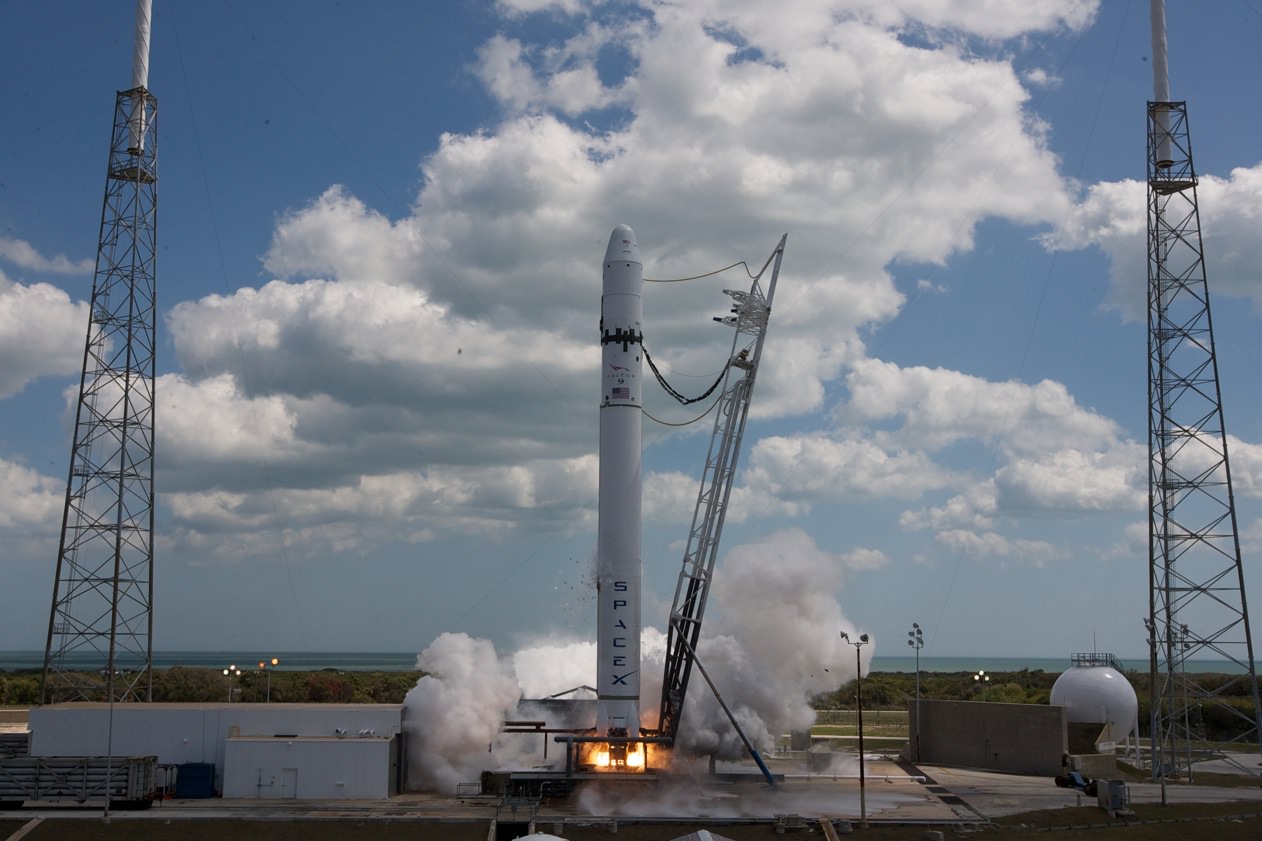[/caption]
SpaceX announced that today's (Mar 13) test firing of all 9 Merlin first stage engines was successful at Pad 40 at Cape Canaveral. This is a major milestone towards the planned inaugural first flight of the Falcon 9 rocket which SpaceX is building. This success follows an aborted test firing attempt on Thursday (Mar 11) and several other delays due to poor weather at the Cape this week.
The Falcon 9 will play a crucial role in
resupplying cargo for the International Space Station
after the scheduled retirement of
NASA's Space Shuttle program
set for late this year or early 2011.
[caption id="attachment_59764" align="alignleft" width="166" caption="Falcon 9 static test at pad 40. Credit:Chris Thompson/SpaceX"]
[/caption]The test occurred at 12:30 PM at Launch Complex 40 which is the next pad down the line from
Atlas Launch Complex 41
.
The first actual Falcon 9 blast-off is set for no earlier than April 12 between 11 AM and 3 PM
Falcon 9 is a two stage, liquid oxygen and rocket grade kerosene (RP-1) powered launch vehicle. It uses the same engines, structural architecture (with a wider diameter), avionics and launch system as the Falcon 1
Here is the official announcement I received from SpaceX this afternoon:
[caption id="attachment_59618" align="alignleft" width="250" caption="SpaceX Falcon 9 test at Pad 40. Credit: Florida Today"]
[/caption]"Today, SpaceX successfully completed a test firing of the inaugural Falcon 9 launch vehicle at Space Launch Complex 40 located at Cape Canaveral. Following a nominal terminal countdown, the launch sequencer commanded ignition of all 9 Merlin first stage engines for a period of 3.5 seconds."
"Just prior to engine ignition, the pad water deluge system was activated providing acoustic suppression to keep vibration levels within acceptable limits. The test validated the launch pad propellant and pneumatic systems as well as the ground and flight control software that controls pad and launch vehicle configurations. The completion of a successful static fire is the latest milestone on the path to first flight of the Falcon 9 which will carry a Dragon spacecraft qualification unit to orbit."
Under NASA's Commercial Orbital Transportation Services (COTS) program, SpaceX plans three launches of the Falcon 9 rocket and Dragon spacecraft this year to demonstrate delivery of cargo to the ISS as well as returning cargo to Earth. The entire schedule moving forward is dependent on a successful inaugural launch.
NASA awarded SpaceX a $1.6 billion contract to conduct a minimum of 12 flights and deliver at least 20,000 kg of cargo to the ISS. An option for additional missions could increase the cumulative total contract value to $3.1 billion.
The 180 ft tall Falcon 9 will be capable of lifting approximately 11 tons to low Earth orbit (LEO) and in excess of 4.5 tons to Geosynchronous Transfer Orbit (GTO).
Update: SpaceX photos added
[caption id="attachment_59599" align="aligncenter" width="580" caption="Falcon 9 erected at Launch Complex 40. Credit: SpaceX"]
[/caption]
[caption id="attachment_59590" align="aligncenter" width="580" caption="All 9 Merlin 1C engines fired successfully today, March 13. This photo shows the fire generated from the flushing of fuel and LOX, but no engines actually started during this aborted test on March 11. Credit: SpaceX"]
[/caption]
 Universe Today
Universe Today
